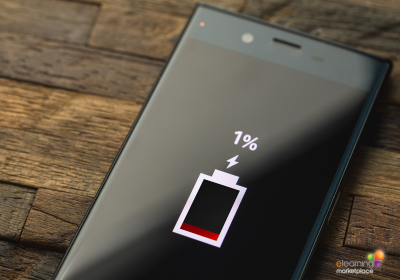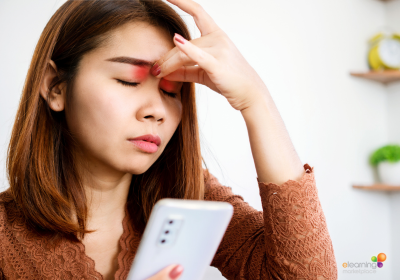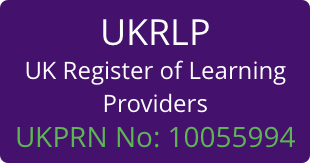
When we really sit down and think about it, we all live digital, online lives. It is unavoidable. For some of us, it’s less digital footprint and more of a full-body, digital shadow shaping our mental health. From social media communities to communicating via emails or WhatsApp. From booking an appointment with your dentist to checking-in online for your holiday. From booking that concert, paying that parking charge notice, and maybe doing your online banking or grocery shop. Since the birth of smartphones and social media over twenty years ago, we are digitally connected to a huge online network that covers every facet of our lives. There are both positives and negatives to this, but that’s not really the point.
Instead, we should be looking at our own relationship with technology: what we use it for and whether we really need to? How often are we intentionally and thoughtfully engaging with what we’re scrolling through? How much time are we offline as opposed to on it?
Just like our digital and online presence drains our device’s battery, it too can drain our own mental health and wellbeing.

In recent years there has been an increase in self-care awareness and it seems 2025 is the year of the ‘digital detox’. More than a third (38%) of adults recognise the negative impact being online has on their well-being, as reported in the EY Decoding the Digital Home survey.[1] Furthermore, it also revealed that 41% of UK households are concerned about the level of screen-time in their homes.
And with this comes a need for safety. In the same way we are aware of our surroundings when crossing a street, or driving a car, or on a night out, we need to be aware of the dangers and risks found in online spaces. Especially when nearly 7 in 10 (68%) have encountered harmful or disturbing content while online, including suicide & pro-eating disorder content, racism, misogyny, and bullying.[2]
A recent (2024) Channel 4 documentary, Swiped, conducted an experiment to ban smartphones in an Essex-based school for three weeks. Amongst the participating Year 8 students, the results revealed a 17% reduction in feelings related to depression and an 18% reduction in feelings related to anxiety and nervousness.[3] Whilst some countries in the world, like Australia, have made the decision to ban social media for under 16s, there is still evidence-gathering and informed discussions being had on whether to make a similar move in the UK. Needless to say, however, the connection between mental health and online safety is becoming more and more obvious.
Unhealthy online habits

It is important we notice our unhealthy online habits. We need to recognise our own unsafe online behaviour (which can escalate the risks when using technology) and to know how to restore a more balanced overall wellbeing. What does this look like exactly? Well, let’s take a look at the most common habits and how they connect to mental health:
Keep scrolling, scrolling, scrolling…
Endless Scrolling (on news feed or social media) is the quickest way to lose time, and it can also lead to information overload, anxiety and reduced attention span. Scrolling at night-time before bed impacts sleep quality with the brain struggling to switch off. Sleep deprivation and minimal downtime will lead to ‘burnout’ and reduced productivity.
Careless clicking
With scrolling comes unconscious clicking and mindless engagement with content, to then creating ‘easy to guess’ passwords and performing general online carelessness. Cyber criminals prey on ‘unconscious’ engagement and we are all one wrong click away from being scammed or targeted. One thoughtless click could lead to further mental stress and even trauma, depending on the circumstances.
Using devices during meals or using multiple devices at once
Multitasking at its finest? More like at its worst. Using devices constantly increases mental strain and exhaustion especially if breaks are not taken. And being digital at dinnertime means disengaged eating, little social interaction, and it can create a disconnection with loved ones around you.

Using technology for everything
From checking the weather, to setting reminders, to turning on the lights. We’ve integrated technology so much that we forget we could look out the window, write ourselves a reminder, and move to the actual light-switch! Life is so fast-paced that we think using technology for everything is a successful way to “get it all done”. And with the growing presence of AI, technology is being turned to again without thought or consideration. But the key to better mental health and wellbeing is to slow down, allow our brains to process, action tasks ourselves, and be more present.
The Matrix is Everywhere
With most of us leading digital lives, it is unsurprising that technology now plays an increasing role in health, fitness and wellbeing. There is after all an App for everything nowadays! Health and fitness can be tracked via smartphones and smart watches. Going for a run can be screenshot and whittled down to data: heart rates, calories burned, distance, and pace. I can’t help but think back to 1999’s classic science-fiction film, The Matrix, and how we are all very much plugged into it!
According to Ofcom’s Media Lives reports, three-quarters of adults (76%) said they used the internet for at least one health and wellbeing activity, including looking up health symptoms (35%) and healthy eating/nutrition (28%).[4] Despite the fact being online can contribute to stress and poor mental health, 40% also said they use the internet for ‘relaxing’. And this is because being online and in digital spaces – when used safely and intentionally – can shape our lives positively.
In fact, technology has become a great advocacy for mental health. The barriers to mental health are broken down with online therapy platforms like BetterHelp and Talkspace to apps like Calm and Headspace. People can find great online support for managing anxiety, depression and sleep disorders.
Social media tends to get a bad reputation. However, it can create virtual safe spaces for people to anonymously open up about their struggles and to find online a community they otherwise haven’t found face-to-face. When used right, social media can validate and normalise people’s feelings and experiences. It is a double-edged sword unfortunately. As fast as it can uplift, the ‘social comparison’ and FOMO (fear of missing out) can worsen feelings of inferiority, low self-esteem, and isolation, especially if we do not know how to be ‘safe’ online.
Disconnect and recharge yourself

Our online and offline lives are seamless. In order to stay mentally healthy we need to be mindful of how we use digital devices and technology. As Arianna Huffington rightly said, “we take better care of our smartphones than we do ourselves. We know when the battery is depleted and recharge it”. The key to understanding how digital life shapes our mental health is knowing when to disconnect and when to recharge. It is about recognising when we need to set boundaries and tidy up our content feeds. And when to practice digital detox and just be present in the real world.
Author: Helen German
Published 15/5/25
You may also like:
Top Ten Tips for Managing Your Time in the Workplace
The Power of our Subconscious Mind in the Learning Processes
How Understanding Neurolearning can Lead to Better Learning Outcomes
Sources
[1] https://www.ey.com/en_uk/insights/tmt/how-to-adapt-to-changing-demands-in-the-uk-digital-home
[2] https://www.mentalhealth.org.uk/explore-mental-health/blogs/online-safety-and-mental-health-are-more-connected-ever
[3] https://www.york.ac.uk/news-and-events/news/2024/research/school-smartphone-ban-better-sleep/
[4] https://www.ofcom.org.uk/media-use-and-attitudes/media-habits-adults/top-trends-from-our-latest-look-at-the-uks-media-lives







 UK: 0844 854 9218 | International: +44 (0)1488 580017
UK: 0844 854 9218 | International: +44 (0)1488 580017








